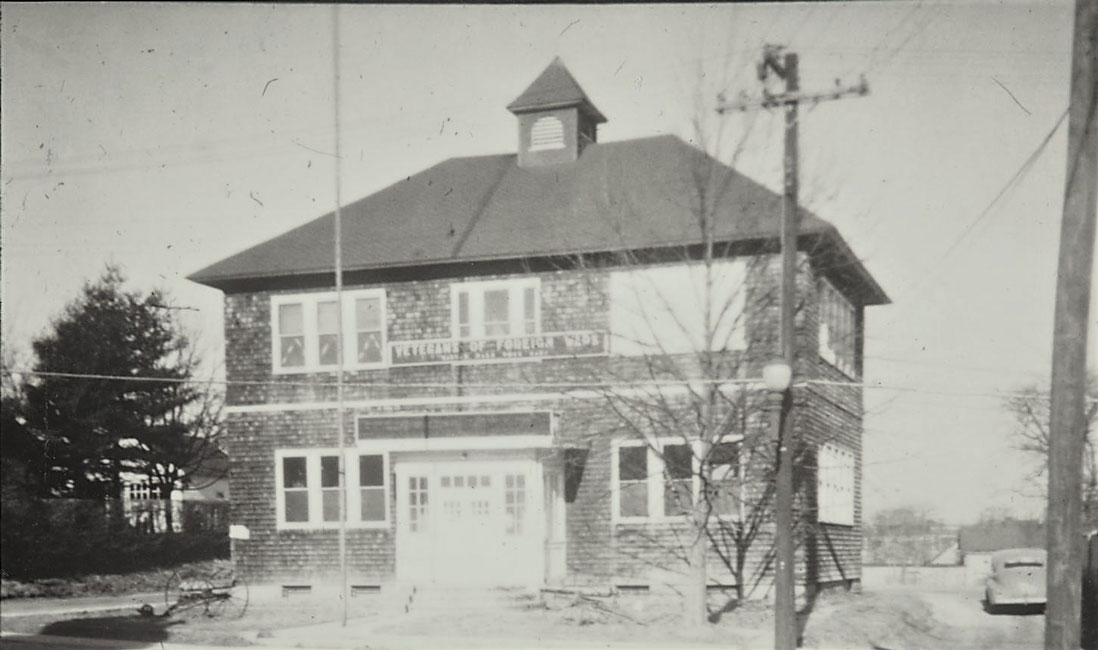Long before the phrase urban renewal found its way into America’s lexicon, the Huntington School District erected a four room school on School Street in Huntington Station. The structure, built in 1906 for $6,500, was Huntington Station’s first school.
Prior to the construction of this school, Huntington Station youngsters had to travel to Main Street School located across the street from the Old First Church. The Main Street School was built in 1888 and is the smaller of two buildings which today comprise the town hall complex on Main Street/Route 25A. In an era of limited means of transportation, Main Street School was quite a distance from Huntington Station.
Referred alternately as Station School or School Street School, neither the building nor the street it was located on still exists today. The 1960’s era urban renewal project that obliterated much of the Huntington Station area north of the LIRR tracks, eliminated School Street, which ran west for several blocks between New York Avenue and Tower Street.
Today, only the most observant of historians can spot where School Street was located. A small stretch of the street can be seen in a commuter parking lot on the west side of New York Avenue. It was on the corner of School Street and Lowndes Avenue that Lowndes Avenue School and later Roosevelt Elementary School once stood.
When Roosevelt was demolished, also as part of urban renewal, the grounds that surrounded the school were significantly enlarged and a new elementary school was constructed several hundred feet to the north on Lowndes Avenue. School Street, which cut through the new property, disappeared. To the east of Lowndes Avenue, a housing complex was built over the street and to the south, the new school’s grounds gobbled it up.
During the early years of the Station School, there weren’t enough school age children in Huntington Station to fill its four classrooms, of which two were on the ground floor level and two on the second floor. Only two rooms were initially needed for the youngsters in grades 1-4 that attended school there in the early 20th century.
The school featured a large, loud bell on the roof. This was typical for that era. The bell rang out 30 minutes prior to the start of the school day as a reminder for parents to bring their children to class on time. When the school dismissed students in mid-afternoon, the bell sounded again so parents could prepare. The building’s janitor was paid an additional $125 annually to maintain and ring the bell.
The bell itself has a storied history in the Huntington School District. For many years was used atop the Union School building on Main Street, which was razed in 1908 to make way for a new Huntington High School, which still stands as the current town hall building.
When Station School gave way to Lowndes Avenue School in 1913, the bell moved across the street. Years later it was found in a storage area by a custodian, dusted off and put on display. Today it can be found in the main hallway at Huntington High School, having been situated there by Jack Abrams, the district’s late School Heritage Museum founder and curator.
Station School was later used as an annex for Lowndes Avenue School when that building became crowded. After Lincoln Elementary School opened on E. 9th Street in Huntington Station adjacent to St. Hugh of Lincoln Church, the district had little need for Station School.
It was closed in 1927 and leased to the Huntington Station Post Office. In 1932 the Nathan Hale Post of the Veterans of Foreign Wars purchased the building and continued renting the ground floor to the US Post Office while using the upper level for its meetings.
The Station School building completely disappeared in 1968 when it was demolished in the massive urban renewal project. But, a small section of School Street survived in that commuter parking lot.
